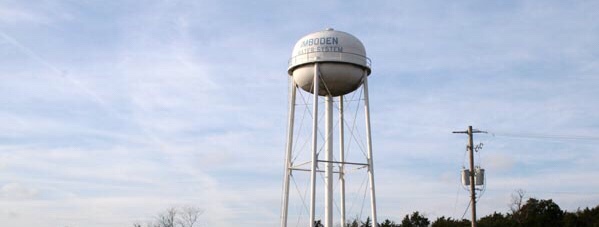The Imboden Water Department would like to issue this friendly reminder… Due to the exceptionally cold temperatures and with the forecast showing even colder temperatures on the way frozen pipes and water meters are likely to occur to prevent this from happening leave a small, steady stream on water running from a faucet that’s located on the inside on an exterior wall of your home. This will stop the inconvenience of losing water service and busted lines under your house and could save a visit from a plumber.
Share this information with anyone you may know.
Some more helpful tips are listed below….
Start Outdoors
• Disconnect and drain the garden hose connection. This will help prevent outside faucets and pipes from freezing, leaking or breaking.
• Close outside vents, crawl spaces and doors so cold air doesn’t seep inside.
• Repair broken windows and seal cracks in the walls.
• Insulate, Insulate, Insulate
• Wrap water lines and meters in commercial insulation.
• Wrap pipes subject to cold or freezing in heat tape available from hardware stores. It must be kept plugged in all winter.
• Locate The Shut-off Valves
• Make sure the valves on either side of the water meter are working properly.
• Place a tag on the main shut-off valve. Make sure everyone in the house knows where it is and how to operate it in an emergency.
• Check The Heat
• If you’re going away, keep a minimum amount of heat on in the house. This will help protect the pipes in case the temperature drops.
• If you plan to turn the heat off, drain all the water from the pipes, toilets and water heater. Turn off the power source to the water heater. If your heater operates on gas, turn the heater on “pilot.â€
More Tips For Freezing Weather
• Check the meter periodically to see if there is damage and contact us if you detect a crack.
• If a sink is located against an outside wall, open the cabinet doors overnight to allow warm air to reach water pipes.
• If you have had problems with frozen pipes in the past, keep a trickle of water running from the highest faucet in your house. During extremely cold periods, this trickle should be the size of a pencil point. You will be billed for the water used but this procedure may help prevent more costly plumbing repairs resulting from broken pipes.
Thawing Frozen Pipes
Partial water service indicates that a pipe is frozen somewhere in the house. A complete lack of water service can be the result of a frozen water meter or a frozen pipe leading from the water main in the street to the house. A meter or water pipe that feels extremely cold is most likely frozen. It’s important to clear frozen blockages as soon as possible to minimize the danger of pipes bursting in some inaccessible spot. The resulting leak could cause serious property damage.Follow the important steps outlined below to help thaw frozen pipes. In some instances, it may be best to call a licensed plumber.
Indoors
• If a water pipe has frozen and burst, turn off the water at the main shut-off valve in the house.
• Open a nearby faucet slightly so the pipe can drain as it thaws
• Thaw pipes and meters by applying hot air from a hair dryer, electric heater or by using a heating pad.
• Do not use electrical appliances in areas of standing water because you could be electrocuted
• Never use hot water or a blowtorch on a frozen pipe or water meter.
• Frozen underground pipes running into the house may require the application of electric current or other thawing devices. A licensed plumber must address this problem.
• If frozen underground lines outside the house are an annual problem, consider lowering them in the spring to a point below the frost line.
